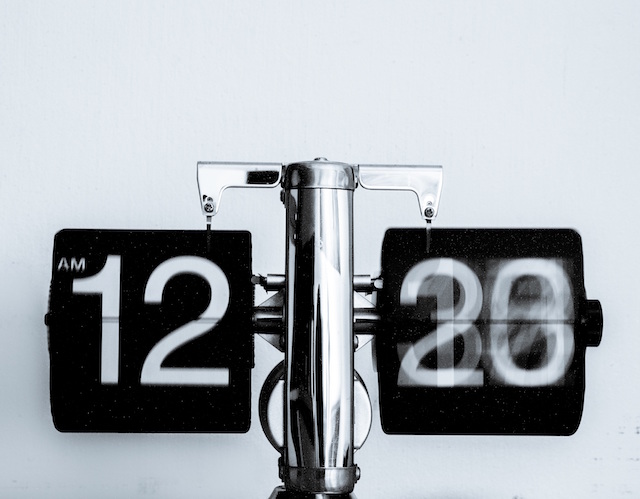 Entrepreneur and and Oprah-approved thought leader Marie Forleo says that one of the key differences between semi-productive people and really productive people is that they don’t see time as the enemy.
Entrepreneur and and Oprah-approved thought leader Marie Forleo says that one of the key differences between semi-productive people and really productive people is that they don’t see time as the enemy.
Those of us who “set up an adversarial relationship with time (are),” she explains, are “always going to struggle against it. And let’s be honest, most of us talk smack about time all the time. It’s never enough, it’s always running out, we’re always complaining about it.”
Like so many of us in our twenties, I spent a lot of time in my early career racing against the clock, constantly trying to get somewhere I wasn’t, and making it (frustratingly) clear to myself that this way of working was compromising both my quality of work and my quality of life.
Juggling a full time job and a side-hustle, a yoga practice, a writing course and a social life was a lot to manage, but in those early days, I was the first to remind myself that I don’t have half the stresses most other people have and push myself onward, adopting time management strategies as if they were another side-hustle strategy.
Sound unfocused? Hyperactive? I call it misguided passion. Multiple passions. That’s allowed, even expected, in the new economy, right? Those who spend the majority of their time online for work see the blurring lines between job roles, entire departments, technology. We spend a lot of our time working these multifaceted, often multidisciplinary jobs, many of us have or will have multifaceted career tracks.
I don’t know about you creative folks out there, but I work best when I’m fully present—the kind of super-focused creativity I seek can only really happen in the present moment when I’m focused on one thing at a time. Does that mean I have to just choose one career track and focus on it? No.
The way I see it, I can still be multi-passionate and have goals, but if I want to achieve my goals, I have to make my time work for me.
Being productive and kicking a** isn’t about waking up early to meditate, cramming in some morning pages, chugging wheatgrass and espresso and powering through a productivity book a week. For me, it was about taking a step outside that structure and understanding how to heal my relationship with time in order to be supported by my schedule, not a slave to it. Like all healing, this is a personal journey.
It’s one I think all a**-kicking productivity mavens should take on.
Making a few key practices a main priority in my day have helped me to get on the road to healing:
Adopting a daily guided meditation practice—the key words here being daily and guided. Making meditation a daily ritual helps build the mindfulness muscle, which enhances our overall ability to be present, and thus creative. A guided meditation app (there are plenty out there, I use Headspace) has helped keep me accountable (it’s a structured, day by day system with the option for a buddy system). The days I make a point to step out of my routine to do a guided meditation, the more on generally on top of things I feel.
Cultivating acceptance.
Acceptance is power. It provides the awareness to identify and let go of habits or thought patterns that no don’t serve us anymore.
Acceptance is an active process that can be honed, and a regular writing practice is one way to do it.
I read The Artist’s Way and liked the morning pages, but I also like 750 words, a website inspired by the writing practice which aim to facilitate the same “brain dump and let it go” before starting the day. In this website version, you write the same amount, but you can also get stats that analyze the mindset of your words, how often you get distracted, and how fast you write. Being a writer, the online version has also helped me “see” my thought patterns, and when I get distracted, so I can see ways to support myself in staying focused while working.
Sensory awareness.
When we’re tuned into our senses, we experience the present with more depth and intensity. That means we connect more fully with our environment, and it takes less energy to do so. Being sensory aware plays a big role in our being able to achieve flow state, the state in which we lose track of time and our ideas flow out fast.
Flow state researcher Steven Kotler found that one of the triggers to achieving flow is “deep embodiment” which, according to him is a fancy way of saying paying attention to multiple sensory streams at once. Mindful walking is one practice that helps teach that attention to the senses. Ending my day with this has helped me shut down my mind before sleep and wake up feeling more in-touch.
The most important part of all this? We need to remember that there’s a huge difference between planning, thinking about, and saying we’ll do these healing practices and actually doing them. Being friends with time is an active process that requires ongoing attention. It’s not a transaction where I “give this,” “get that”—it’s a consistent relationship, and these are just some ways I try to keep it a healthy one.
Author: Kait Fowlie
Editor: Renée Picard
Image: Loic Djim/Unsplash











Read 0 comments and reply